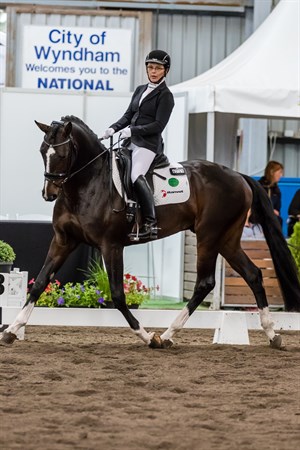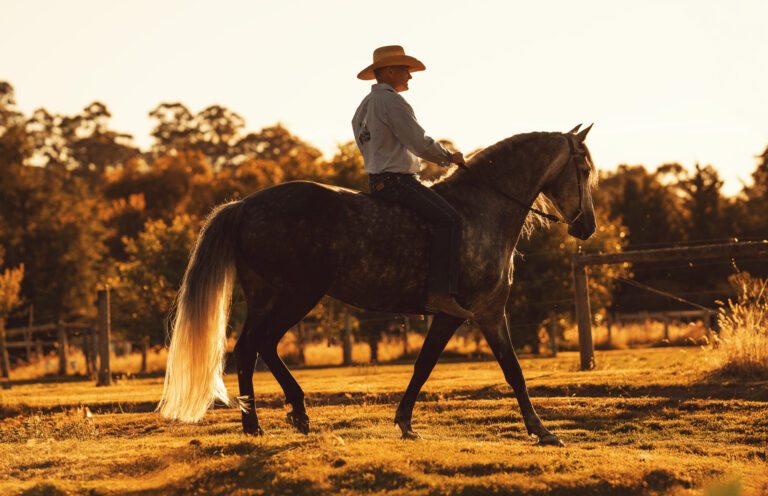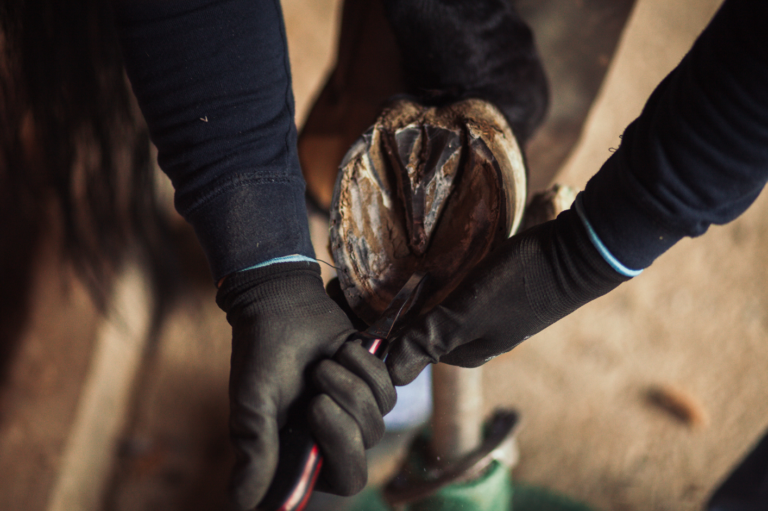Ranvet sponsored rider Charlotte Pedersen
© Ranvet
Specific feeding adjustments are useful in hot climates, whereby horses are subject to performance stress, hydration, excessive electrolyte loss, heat stress and premature fatigue.
In particular, certain individuals such as hyper-energetic horses or those with a disposition to be nervous or excitable have a propensity to be more severely affected by hot and in particular, humid environmental conditions.
In a hardworking horses or those working over long distances such as endurance types, additional digestive heat increases the ‘heat load’ which needs to be lost for effective cooling. Particularly during hot weather and immediately following exercise, if this heat load is not lost, severe repercussions such as elevated heart rate, increased respiratory rate and poor post exercise recovery may be experienced, more significantly when confounded by the need for the horse to ‘pant’ to lose body heat, which in turn leads to an increase in sweat loss coupled with an increased risk of dehydration and general body salt depletion.
As a guide, energy loss as heat produced during fermentation wastes approximately 20% energy from barley, 23% energy from corn, 30% energy from oats and 70% from fibrous roughage such as chaffs and hays as the feed ferments in the large bowel. Conversely, fat and oil supplements have no heat waste during the digestion process as they are digested by enzymes in the small bowel.
General Feeding Principles in Hot & Humid Climates
Minimize Heat Waste
- In a horse being heavily exercised, the amount of fibrous feed may be reduced to a minimum safe level in order to ensure maintenance of gastro-intestinal health (0.5%-1% of body weight daily). This will ensure adequate gut health and function whilst simultaneously storing adequate water and electrolyte reserves to prevent dehydration in the absence of unnecessary heat production.
- Ration alterations in hot weather are particularly of significant benefit to horses performing endurance work or extended periods of exercise, due to propensity for heavy sweating.
Tailored Dietary Requirements
- Ensure the total amount of roughage as hay and chaff is maintained at a minimum of 25-30% by weight of the ration.
- Reduce the weight and volume of the ration by substituting lower energy containing feeds such as chaff and oats for higher energy dense grains such as barley (extruded preferably) and corn (cracked or extruded preferably)
- Aim to achieve a ration containing approximately 3% fat (30% of the ration). Horses are able to utilize up to 30% of the diet substituted as fats however, introduction of oils should be done progressively and 30-40 mL increments until the desired level is achieved.
- Dampen feeds where possible to minimize respiratory burden while also increasing the involuntary daily fluid intake.
- Provide a balanced electrolyte daily.
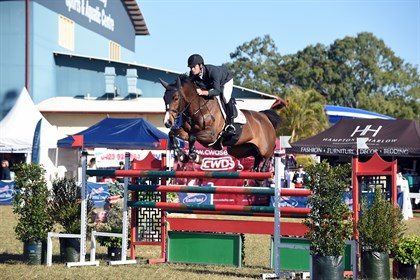
Ranvet sponsored rider Peter McDermott
© Ranvet
Feeding Practices
- Where possible, it is preferable to divide the total daily feed volume of concentrate (grain, protein meals), hay, chaff and electrolytes into 3 small meals. This prevents excessive overloading of the digestive tract while also minimizing the heat of digestion which may increase core body temperature
- Consider that higher energy density feeds provide a smaller volume and reduced heat waste while providing the necessary caloric intake for adequate energy provision. This is of particular importance for endurance and long distance training whereby it is advantageous to substitute 10% by weight of the grain portion of the ration with oil.
General Management Guidelines
- Remove all tack, particularly those that restrict breathing (girth) and impede heat loss from the lower limbs such as bandaging or padding. This will allow a quicker restoration of recovery and allow the tendons and lower limbs to lose heat rapidly.
- Hose the horse immediately following exercise and scrape off excess fluid to facilitate the evaporation process, particularly around the pulsatile areas of the gut, limbs and neck. It is not advisable to leave warm water on the body of the horse in humid weather as this will cause the body temperature to decrease slowly rather than rapidly, caused by the insulating effect of water trapped in the coat. Additionally, walking the horse will further aid air flow and encourage evaporation.
- Allow the horse to adequately cool prior to transporting. Confinement, particularly with other halted horses will increase the trapped heat within a confined space such as a trailer or truck and encourage further sweat and therefore valuable electrolyte losses. Adequate air flow should be ensured whilst travelling.
- Exercise in the cool part of the day where possible. It must be considered that horses may take up to 4 hours to restore normal body temperature completely following exercise.
- Pre-cooling the horse prior to exercise aids in delaying accumulation of body heat as the core temperature increases during exercise. The evaporation of water from the coat during work also aids to lower core temperature and may significantly reduce sweat loss under hot and humid conditions.
Supplements to include in Hot and Humid Conditions
Salkavite® provides all essential electrolytes that a horse in work loses including sodium, potassium, calcium, magnesium, chloride, phosphate and sulfate as well as additional B-Group vitamins. It also contains Vitamin E and Rutin due to their acknowledged benefits to a horse subjected to extreme physical stress.
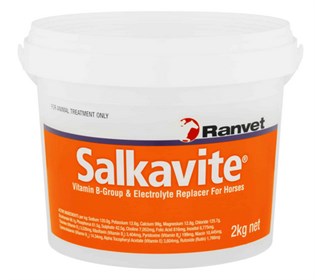
Ranvet – Salkavite
Electropaste® provides a concentrated, portable source of B-Group vitamins, electrolytes and anti-oxidants including Vitamin E, to rapidly replenish body stores depleted by hard exercise or transportation.
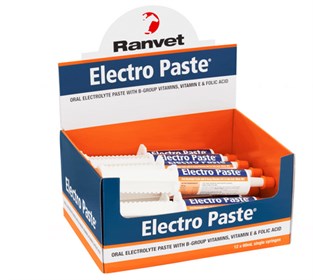
Ranvet – Electropaste
Grand Prix Oil supplies a palatable supplementary source of energy with Linolenic (Omega 3) and Linoleic (Omega 6) fatty acids in appropriate balance. Additionally, the supplementation of dietary oil has beneficial effects to aerobic performance whereby the use of dietary fats spare muscle glycogen stores, thus extending endurance and minimizing lactic acid build-up. The addition of fat into the diet also assists the absorption of fat soluble vitamins (A, D, E, K) contained in the feed or added to the diet in supplement form while improving the stability and increasing the protection of cell membranes and the health of the skin.
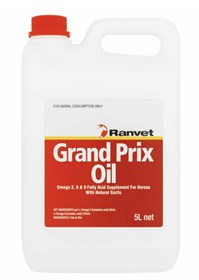
Ranvet – Grand Prix Oil
You can find out more about Ranvet and their products by
This article was written in conjunction with Ranvet.
READ THE LATEST NEWS ARTICLES HERE

